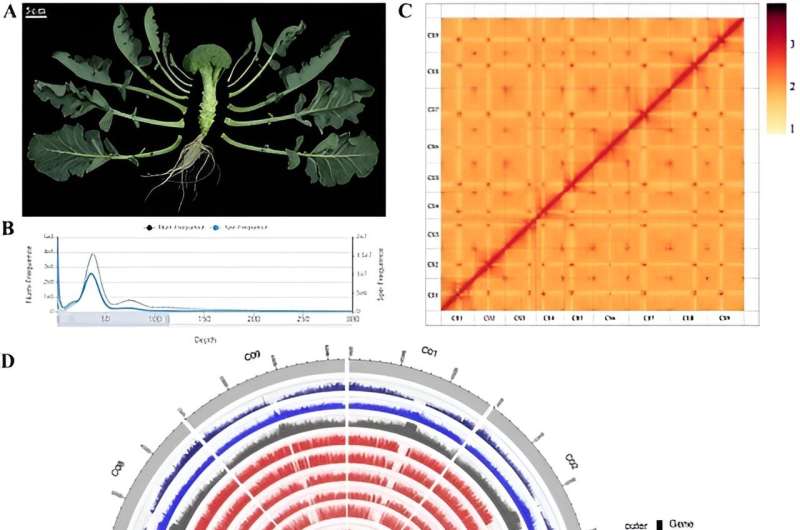This article has been reviewed according to Science X's editorial process and policies. Editors have highlighted the following attributes while ensuring the content's credibility:
fact-checked
peer-reviewed publication
proofread
Unlocking broccoli's genome: Key to enhanced health benefits

Broccoli is renowned for its health benefits, primarily due to its rich glucosinolate (GSL) content, which has anti-carcinogenic and antioxidant properties. Despite extensive studies on Brassica species, the genetic basis for GSL diversity remains unclear.
Understanding these mechanisms is crucial for enhancing the nutritional value of broccoli and related crops. Previous research has identified various GSL structures, but the specific genes and their roles in GSL biosynthesis need further exploration. Addressing these gaps is essential for developing genetically improved Brassica crops with enhanced health benefits.
Researchers from Hunan Agricultural University have published a study in Horticulture Research, presenting a chromosome-scale genome assembly of broccoli. This study utilizes advanced sequencing technologies to provide a detailed analysis of GSL biosynthesis.
The study successfully assembled a high-quality chromosome-scale genome of broccoli using advanced PacBio HiFi reads and Hi-C technology, achieving a total genome size of 613.79 Mb and a contig N50 of 14.70 Mb. This detailed genomic map allowed the identification of key genes involved in GSL biosynthesis, including the crucial methylthioalkylmalate synthase 1 (MAM1) gene.
The research demonstrated that overexpression of BoMAM1 in broccoli significantly increases the accumulation of C4-GSLs, highlighting its vital role in GSL biosynthesis. Additionally, the study provided insights into the evolutionary mechanisms that contribute to the diversity of GSL profiles among different Brassica species.
These findings offer a comprehensive understanding of the genetic factors influencing GSL production, which is essential for future genetic studies and the development of Brassica crops with enhanced nutritional properties.
Dr. Junwei Wang, a corresponding author of the study, stated, "Our findings provide a comprehensive understanding of the genetic factors influencing GSL biosynthesis in broccoli. This knowledge is crucial for future genetic improvement and enhancing the nutritional value of Brassica crops."
This genomic study offers valuable resources for molecular breeding programs aimed at improving the nutritional content of broccoli and other Brassica crops. By understanding the genetic basis of GSL biosynthesis, researchers can develop varieties with enhanced health benefits, contributing to better human health and nutrition.
More information: Qiuyun Wu et al, Chromosome-scale reference genome of broccoli (Brassica oleracea var. italica Plenck) provides insights into glucosinolate biosynthesis, Horticulture Research (2024). DOI: 10.1093/hr/uhae063
Journal information: Horticulture Research
Provided by TranSpread





















